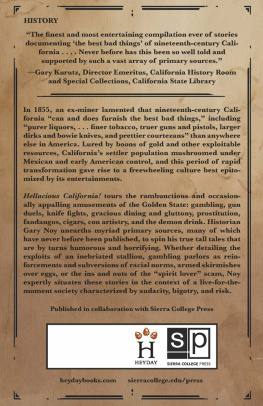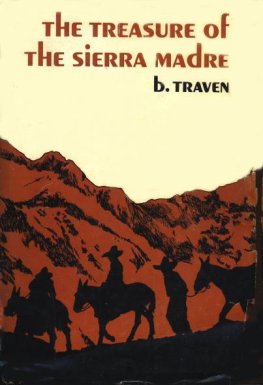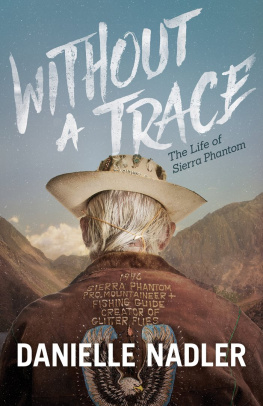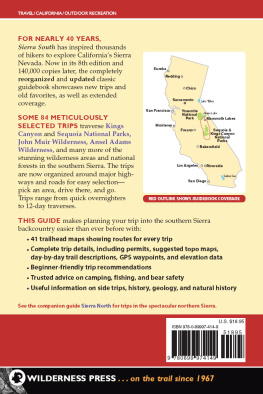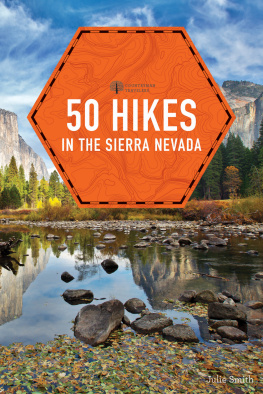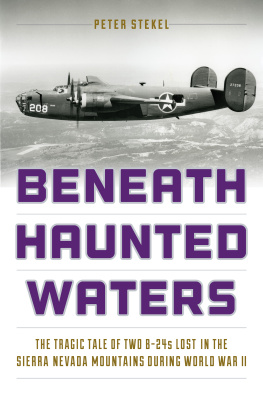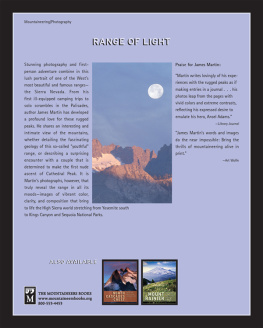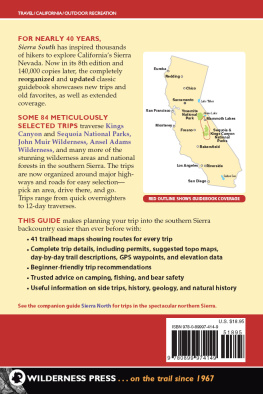

This Sierra College Press book was published by Heyday and Sierra College.
2014 by Gary Noy
All rights reserved. No portion of this work may be reproduced or transmitted in any form or by any means, electronic or mechanical, including photocopying and recording, or by any information storage or retrieval system, without permission in writing from Heyday.
Library of Congress Cataloging-in-Publication Data is available.
Cover Art and Design: Ashley Ingram
Interior Design/Typesetting: J. Spittler/Jamison Design
Sierra Stories was published by Heyday and Sierra College. Orders, inquiries, and correspondence should be addressed to:
Heyday
P.O. Box 9145, Berkeley, CA 94709
(510) 549-3564, Fax (510) 549-1889
www.heydaybooks.com
FOR
MOM AND DAD

CONTENTS
FOREWORD
by Malcolm Margolin
Those of us who live in the San Francisco Bay Area go to work, we go to school, we go to the store, but we escape to the mountains. We escape the way a prisoner escapes from jail, a high school student plays hooky, a sailor heads out on shore leave. We run off with deep delight and near total abandon. We shed restrictions, obligations, and expectations; we leave the humdrum behind. In the Sierra we can be free, we can climb, hike, ski, swim, drink, or gamble. In the mountains we can play.
There are things we can do in the mountains that we cant do elsewhere, but perhaps more to the point, there are things that we cant do. We cant farm very well in the mountains; the soil and climate discourage that. The blessed absence of farming was keenly felt, especially in the Gold Rush era. What caused the world to rush in was not just the lure of instant wealth but an opportunity to escape the farm. In the mid-nineteenth century, the great majority of Americans lived on small family farms, enslaved by the endless demands of milk cows, chained to the remorselessness of the crop cycle, working from dawn to dusk, and sometimes into the night. Those who werent farmers didnt have it much better, having to endure the tedium of factory work, the deadly routine of keeping shop, the degradation of civil service, and (although generally unspoken) the straitjacket of family.
I have often thought about the young men of the East Coast, setting out for the distant goldfields of California. There are tears in their eyes as they say farewell and receive the blessings of aged parents, as they clutch a photograph of loved ones to their chests, as they tenderly hide a locket of hair and a love note among their belongings. Those about to leave do everything they can to present themselves as dutiful sons, faithful husbands, and caring fathers setting off on the quest of the hero, the wealth quest, to bring back the gold that will free their families from toil and poverty. It is part of their image as providers, as loyal family members. I know that the tears are realthese were sad and emotional moments. But would you think badly of me if I were to suggest that beyond the tears was a part of them itching to get away from the importunities of a spouse, the criticism of parents and neighbors, the whining of children, and the never-ending lowing of the damn milk cow? That they were, at least in part, deliriously happy to leave the business of life to the polite, the timid, the obedient, and the prudent who would stay behind, have tea on Sundays, and go to church while the wild ones broke loose and headed for the hills?
And once the traveler found himself on the road, might we not imagine that another freedom appeared, addictive and intoxicating in its seductive power: freedom from truth? I know this goes against the dictum that the truth shall set you free. I know Im butting heads against the foundations of modern therapy and the scores of self-help ideologies that teach us to acknowledge our problems and tell us that the road to happiness is through a deep understanding of the truth of our being. But let me at least put forth the notion that for many, especially those with dull lives, the truth is nothing but a set of shackles. Its fantasy and imagination that set us free, and the young men (and sometimes the young women), out of earshot of those who knew them from birth, were able to take on other identities, embrace other fantasies, and fill themselves up with the power, the promise, and excitement of being not who they were but who they wanted to be.
Could anyone ask for a better breeding ground for stories? Here was a world free of lawsnot only the laws of society but even the laws of logic. Who needs prudence when fantasy opens its arms and embraces us? What a cascade of bravado, enterprise, and folly. Take the time, for example, in 1850, when a disheveled vagabond stumbled into a Sierra mining camp and told of a lake ringed with gold nuggets. A witness later described the perfect stampede that ensued. Since Peter the Hermit led his army of fanatics towards Palestine, no such incoherent crowd has been seen as that which rushed through the forest and trailless mountains in quest of this golden delusion. Everywhere, the golden delusion, a.k.a. El Dorado, beckoned, and tens of thousands answered the call.
The Sierra Nevada, with its 14,000-foot granite peaks, crystalline lakes, conifer forests, and hidden valleys, became, and in some ways still is, the domain of dreams, attracting the heroic and the delusional, the best of humanity and the worst. Over the decades, characters have emerged so outlandish and outrageous that they have to be real. Could the human imagination have invented someone like Eliza Gilbert? Born in County Sligo, Ireland, in 1821, she changed her place of birth to Seville, shed a few years from her birth date, and took the name Lola Montez, bringing to Gold Country the provocative Spider Dance, in which she impersonated a young woman repelling a legion of angry spiders under her petticoats. Or Otto Esche, who in 1860 imported fifteen two-humped Asian bactrian camels to transport goods to the mines. Or the artist Albert Bierstadt, whose paintings Mark Twain characterized as conveying more the atmosphere of Kingdom-Come than of California. Or George Whittell, Jr., owner of the Thunderbird Lodge in Lake Tahoe, who at the end of his life withdrew from people, preferring the company of an elephant named Mingo, a lion named Bill, cheetahs, polar bears, and other wild animals.
In 1853, when the Irish-born singer Kate Hayes, billed by P. T. Barnum as the Swan of Erin, toured California, a front row seat at the theater was auctioned off at $1,200. For so much less moneyand, one suspects, greater comfortthis collection of Sierra stories offers us a front row seat too: the backdrop is the Sierra itself, and on the stage is a cast of characters that pays tribute to the restless, dynamic enterprise of our species and the art of good storytelling.

A word about the storyteller: Gary Noy is a scholar, a teacher, a mentor, and a thoroughly decent man. He taught history at Sierra College in Rocklin for more than twenty years, and he is a founder and director emeritus of the Sierra College Center for Sierra Nevada Studies. Im happy to report that despite his education Gary can spin a good yarn, and indeed he keeps us well entertained. Read this book for the joy of the storytelling, but be aware of another current that runs through it. At the hands of someone else, the characters that spill out of these pages might be presented with mockery. If you are looking for mockery, looking for an easy sense of how superior we are to the fools on the page, you might look elsewhere. Something deeper is stirring here. Along with the fun, we feel in these stories a sense of the courage of people, a compassion for those whose hopes were dashed, a rage against the assault upon native people and the brutal suppression of the immigrants, in all a love and respect that Gary as a native son has for the place in which he has lived so deeply and to which he has devoted so much of his life.
Next page

